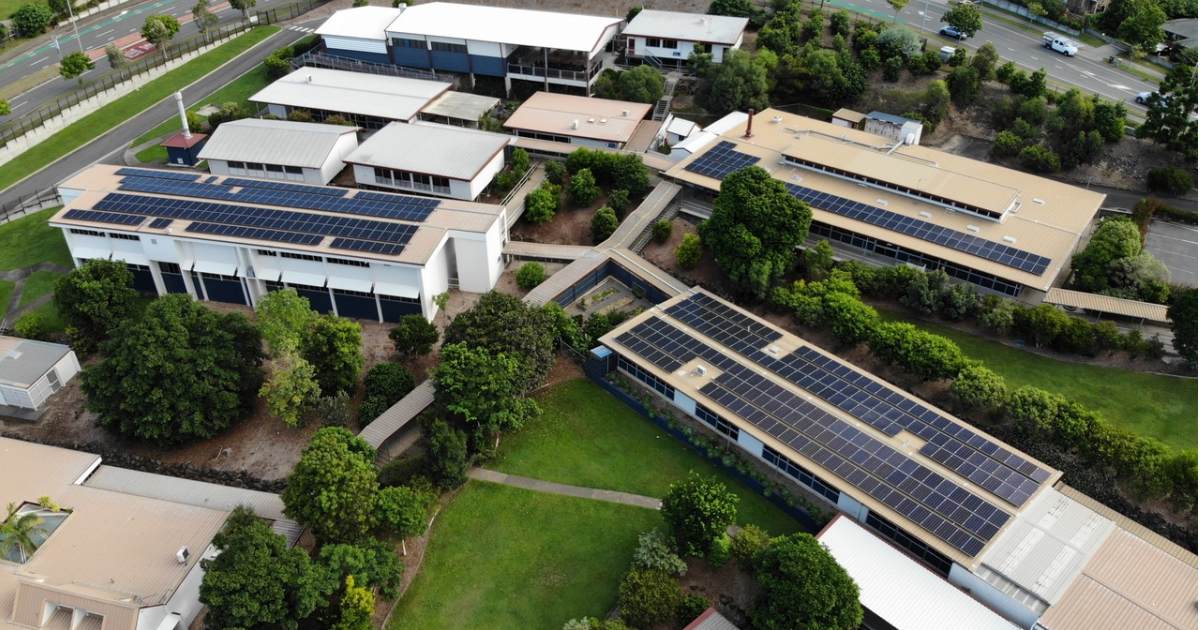
After four years, Queensland’s Advancing Clean Energy Schools (ACES) has wrapped up with 912 schools across the Sunshine State benefiting.
The ACES program kicked off in 2018. After a few teething issues and revisions to targets, the initiative has delivered 20,000 more solar panels and 40 more installations than previously planned. As well as the solar energy goodness being generated from the rooftops of these Queensland schools, the ACES program supported around 1,000 jobs.
According to Queensland Education Minister Grace Grace, collectively the systems are providing a $26 million saving on energy bills annually and generating equivalent to the yearly electricity consumption of 25,000 homes.
“ACES is making a significant contribution to the Palaszczuk Government’s 50% renewable energy target by 2030, with the 200,000 solar panels on state school rooftops expected to generate an average of 280 MW of electricity per day,” stated Minister Grace.
Megawatt Mix-up
Minister Grace is confusing power and energy (again). Based on the “280” figure and a total installed capacity of around 62 MW mentioned here, the minister likely meant 280 megawatt-hours (MWh) of electricity per day.
Kilowatts (kW), megawatts (MW) and gigawatts (GW) are measures of power. Kilowatt-hours (kWh), megawatt-hours (MWh) and gigawatt-hours (GWh) are measures of energy. In Minister Grace’s defence, this confusion is pretty common. Learn more about the difference between power and energy here – it’s something all solar buyers and owners (and government ministers discussing solar) should understand.
Cleaner – And Cooler – Schools
The $168.1 million ACES initiative was tied in with the Palaszczuk Government’s $477 million Cooler Cleaner Schools Program (CCSP), which saw 649 state schools having air-conditioning systems installed. The air-conditioning rollout was completed in April this year, a couple of months ahead of schedule. $71 million of the CCSP’s kitty went to ACES for good reason.
“Now the ACES program is complete, the solar panels we have delivered for more than 900 Queensland schools are helping to offset the added electricity costs of air conditioning,” said Minister Grace.
Schools are often a slam-dunk for commercial solar installations from a financial viewpoint given their significant rooftop areas and energy consumption profiles; with the school day falling smack-bang within the solar electricity generation window.
QLD Still Way Off Renewables Target
The solar panels installed under the program will provide a significant carbon emissions reduction; something Queensland desperately needs. Despite the popularity of home solar power in Queensland and various large-scale renewable energy facilities within its borders, Queensland still has the filthiest power of all Australian states. So far this year, black coal has accounted for 70.8% of electricity generation and 72.1% of consumption in Queensland (Source: OpenNEM).
Given the Palaszczuk Government’s commitment to 50% renewable energy by 2030, it still has a big job ahead of it to reach that target – but remains confident it will do so. Renewables’ share for 2022 so far is around 20% (approximately 19% last year). The years will fly by, so the Palaszczuk Government really needs to get cracking.

 RSS - Posts
RSS - Posts



Speak Your Mind